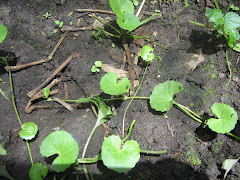

CENTELLA ASIATICA
(GOTU KOLA)
Parts used
The dried and fragmented aerial parts of Asian Centella (L.) Urban (Asian herb Centella) are used.
Indications:
1. Skin:
According to the WHO and various clinical studies, the Centella preparations are indicated for external use as healing substance, particularly to accelerate the healing of postraumatic or postsurgical wounds, as well as for second and third degree burns and the prevention of gravidic stretch marks. Furthermore, they prevent the formation of hypertrophic scars. Also for the treatment of the psoriasis and skin damage of simple herpes.
2. Vascular and lymphatic pathologies
Various clinical studies indicate its application for chronical venous insufficiency, varicose veins, venous hypertension, and its use for the prevention of circulatory problems on medium and long distance flights.
Other recent studies confirm its usefulness in diabetic microangiopathy. Some clinical tests suggest the action against stretch marks and cellulitis, for its diuretic action and improvement of lymphatic circulation.
3. Action on the nervous system
Asian Centella increases the cerebral levels of GABA, which explains its traditional use as ansiolytic and anti-convulsive.
Centella has been used for the treatment of the syndrome of concentration deficit and in cases of feeble-mindedness, although its action mechanism in these pathologies is not known.
4. Anti-tumor action
Probably due to its immune-stimulating properties it produces immunological cytolysis which explains the benefits observed in cancer patients.
5. Peptic ulcer desease
It may be used orally for the treatment of gastric and duodenal ulcers due to stress. Its benefit is apparently due to the immune-modulating active components that act at the gastrointestinal level.






































